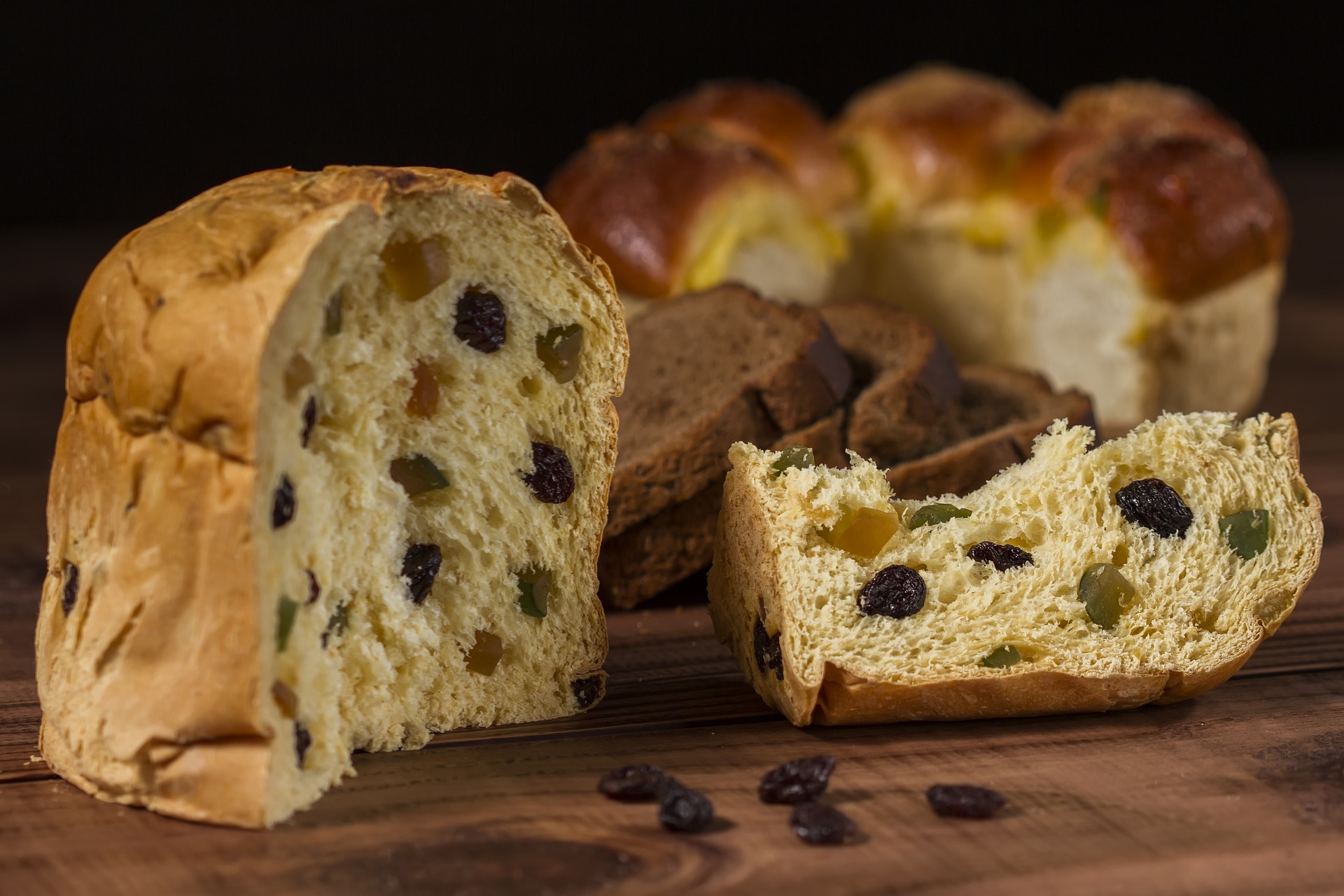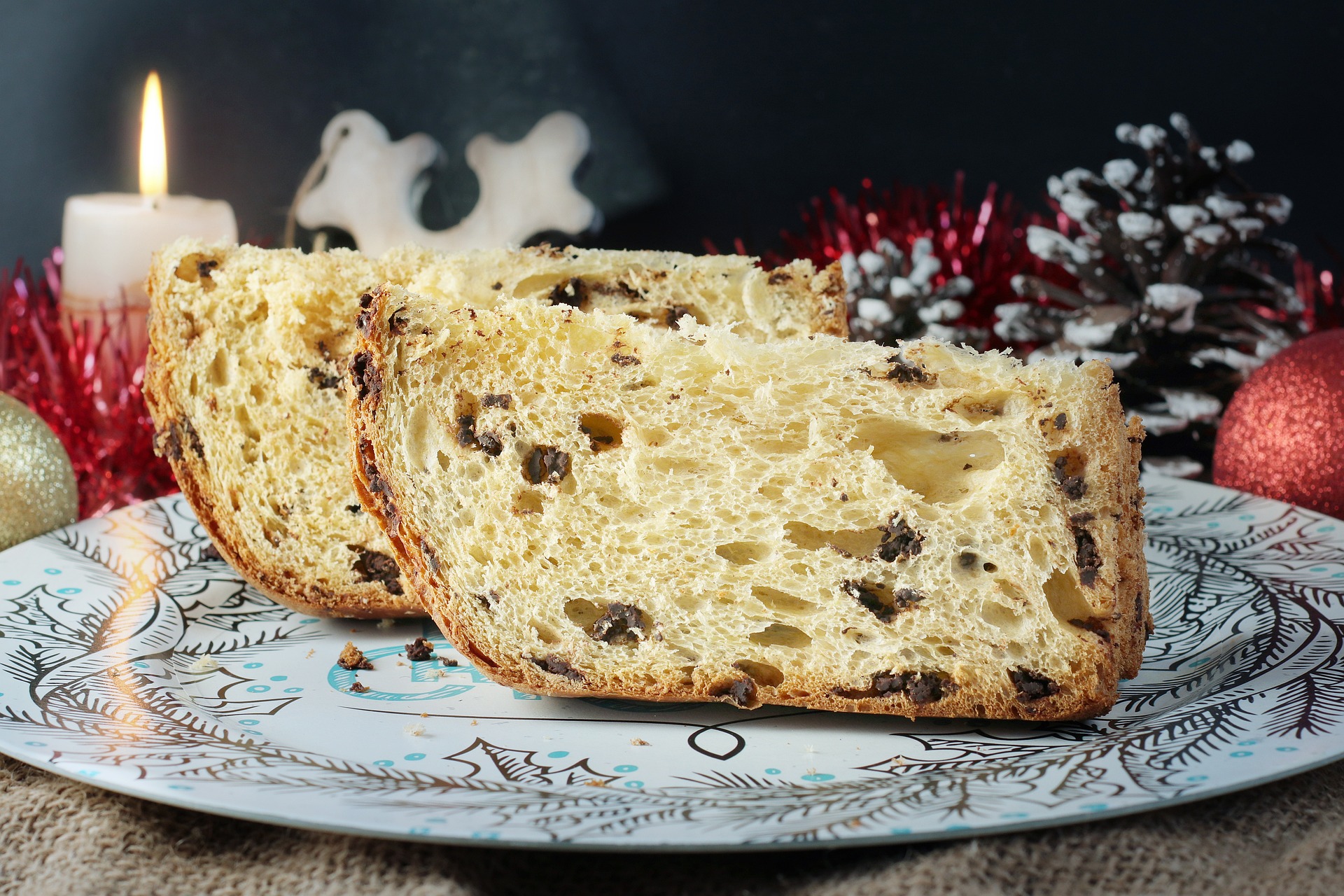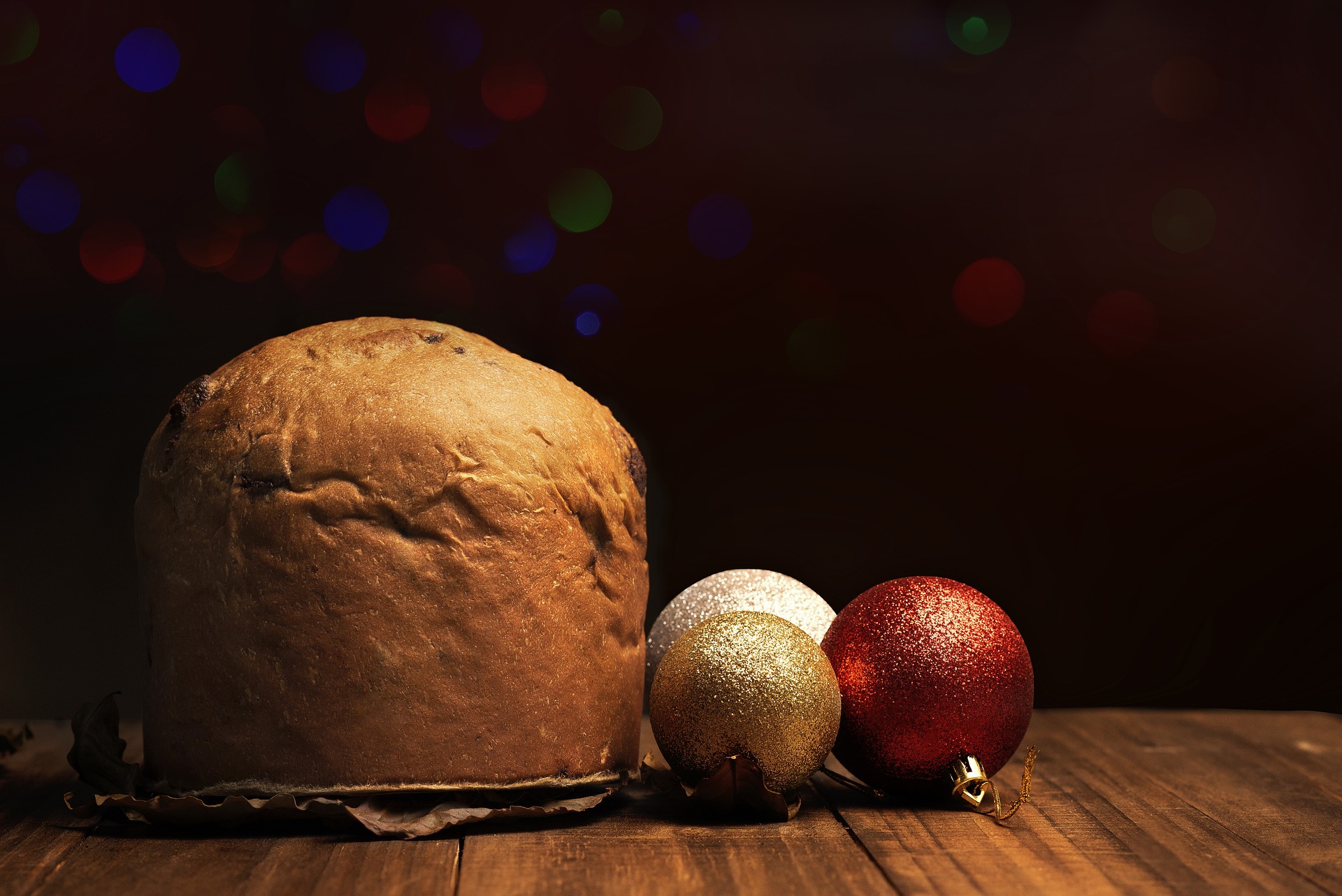Fun facts, customs and traditions about panettone
Panettone is considered, along with pandoro, the quintessential dessert of the season during the holiday season. A well-established tradition, especially in Italy, which over the centuries has brought out many interesting anecdotes and curiosities about panettone.
Indeed, it is almost mathematical to find at the end of Christmas lunch or New Year’s Eve dinner, on tables still set and full of diners, the famous Christmas dessert to share with guests.
Therefore, let us see some curiosities about panettone unknown to most.
1. Panettone: discordant origins, but full of charm
The history of panettone is full of legends and different, sometimes discordant versions.
The most famous one claims that at a Christmas lunch in 15th-century Milan, the cake was inadvertently burned and a scullery boy named Toni remedied the situation by adding butter, raisins and candied fruit to the salvageable dough.
The first official recipe, however, dates back to 1549 by the Ferrara cook Cristoforo di Messisbugo, while in 1599 in the expense register of the Borromeo College in Pavia there is an obvious reference to the dessert (“Christmas Bread“) served to students during lunch on December 25.

2. The fortune coin
An old tradition, the “Rite of Chocolate,” was to put a gold or silver coin inside the dough while making panettone. Once ready and sliced, those who found it would have good luck all year long.
3. Panettone as a cold remedy
A Milan custom is to eat panettone until Feb. 3, the day of St. Blaise, the patron saint of gluttony. The belief is that those who eat it that day are therefore protected from colds and sore throats throughout the rest of the winter.

4. Panettone and bon ton
According to etiquette, panettone should be eaten with the hands, holding the slice with the left hand and breaking off small pieces to swallow with the right. However, if it is served with cream or sauces, it should be eaten on a plate with a fork and spoon.
It should also be served before fruit and never during coffee.
5. Variants and flavors of panettone
Traditional panettone does not include icing, and raisins and candied fruit are usually present. However, several variations have become popular, such as artisanal pistachio, chocolate or berry panettone.
6. The Panettone Decree
Ministerial Decree July 22, 2005 precisely defines the characteristics and composition of panettone cakes. To be considered as such and put on the market, panettone must contain category A hen eggs in such quantities as to ensure not less than 4 percent in yolk, raisins and candied citrus peel in quantities of not less than 20 percent.

7. The official panettone event
Starting in November 2008, every year the “Re Panettone” event is held in Milan, Italy, where the best Italian artisan panettone cakes are displayed and awarded.
8. The competition with the pandoro
Nearly 100 million pieces of panettone and pandoro are produced each year in Italy, with panettone leading the way with about 37000 tons produced versus 32500 for pandoro.
Moreover, according to Coldiretti, 3 out of 4 Italians prefer panettone to pandoro as their Christmas dessert.


Visita il nostro e-shop e scopri tanti prodotti a prezzi vantaggiosi!